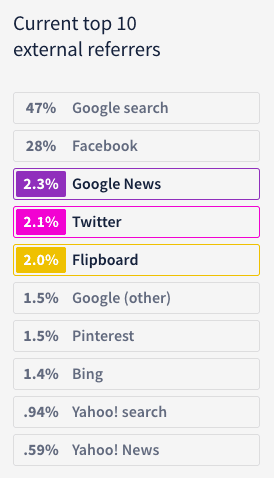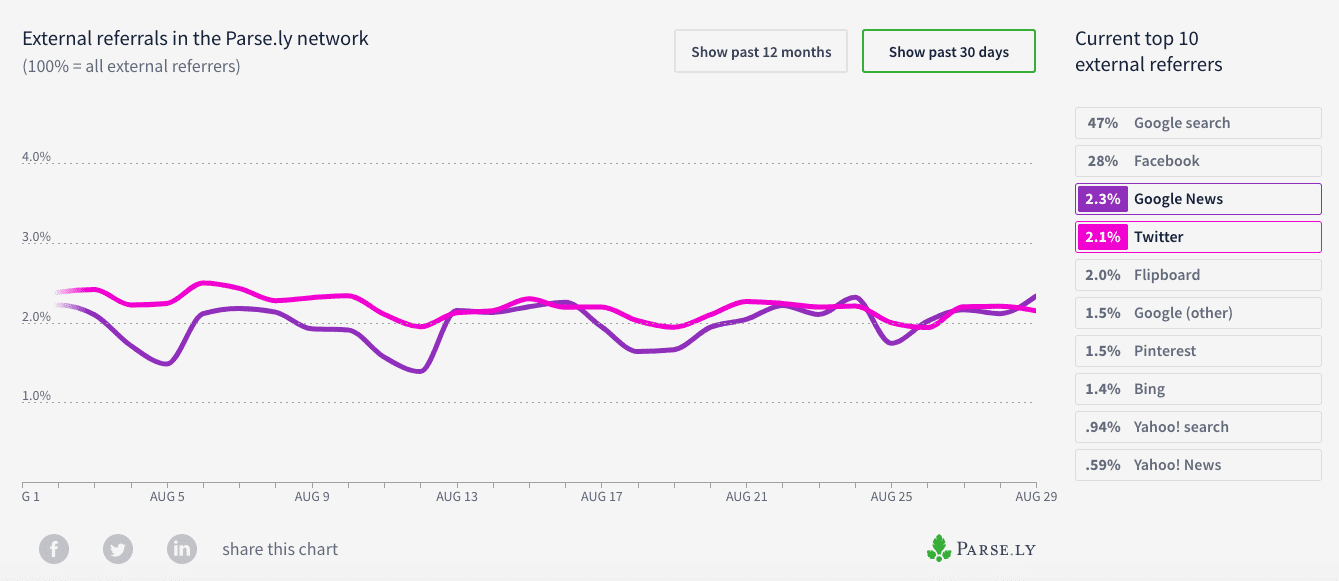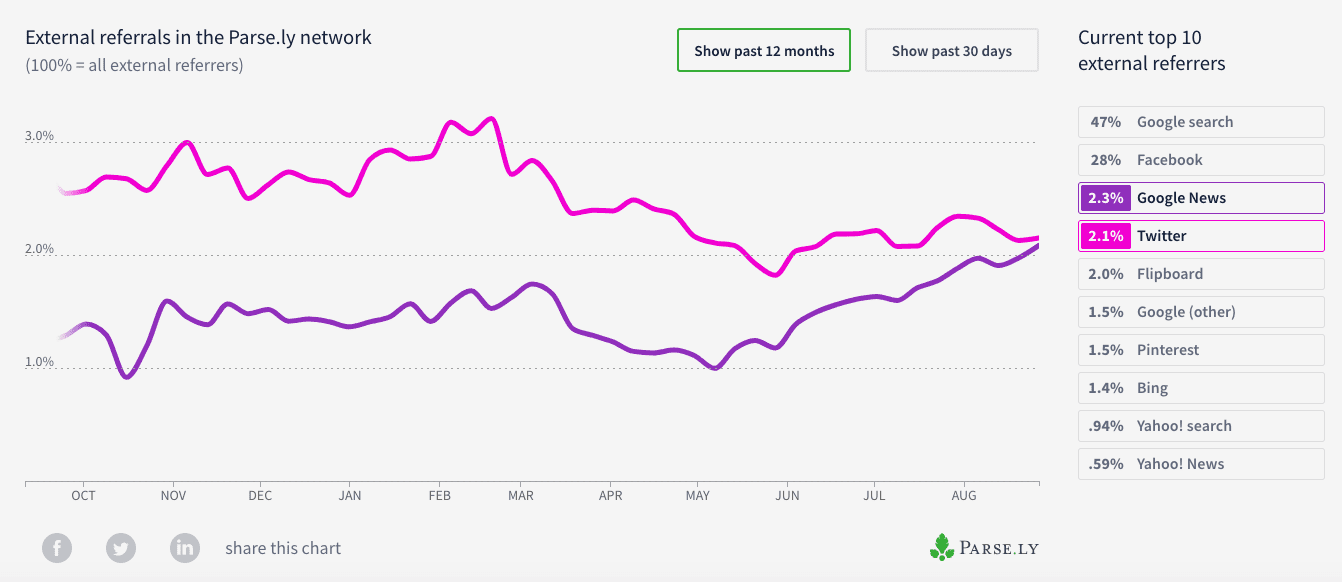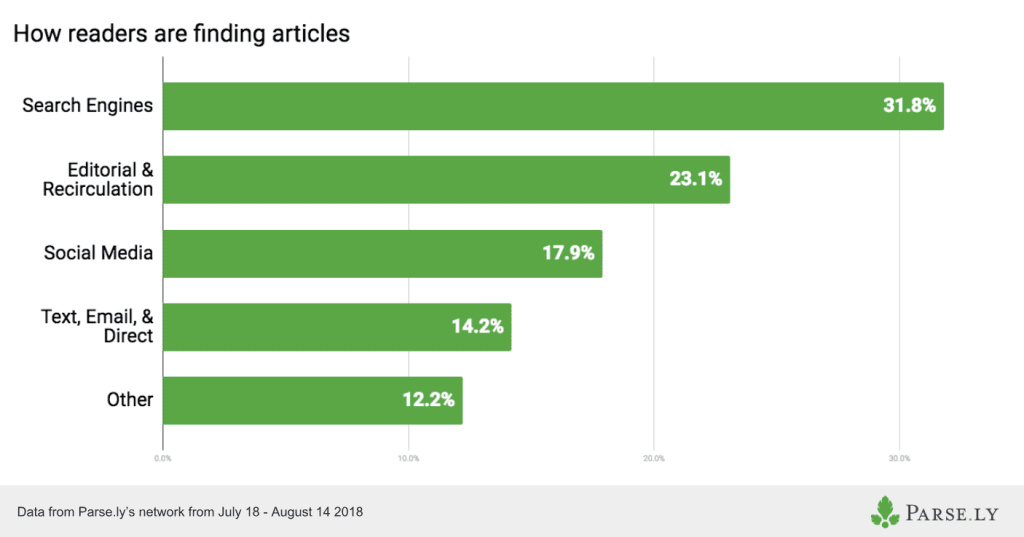|
Getting your Trinity Audio player ready...
|
For publishers looking at online traffic sources beyond the duopoly of Facebook and Google, Twitter used to be the top driver of traffic to media sites, for a very long time.
No more.
Parse.ly—the technology company that partners with digital publishers to provide web analytics and audience insights— reports that traffic from Google News has eclipsed Twitter, which is now competing with Flipboard for the #4 spot.

This month, Google News delivered 2.3% of all external referral traffic to Parse.ly’s network of 2500+ digital publishers, who include Time Inc., Condé Nast, HuffPost and The Wall Street Journal.
Twitter sent 2.1% followed by Flipboard’s 2.0%.

According to Parse.ly’s data, Twitter and Google News, the third and fourth top external referrers to the network, have been battling it out for the last few months, in terms of sending publishers more traffic.

Google News has been closing the gap with Twitter since June this year, and has finally consolidated its lead.
Twitter is also doing its bit to woo publishers, unveiling its plan to help publishers earn more revenue, through “embedded timelines”.
Flipboard, although still at #5, has been driving more external traffic to Parse.ly’s network, with 145 million monthly users, a growth spike of 45 million following an ad campaign earlier this year.
Parse.ly also notes that traffic from Pinterest jumped at the end of last month. Currently, Pinterest falls right behind Flipboard, driving 1.5% of external traffic compared to Flipboard’s 2%.
In spite of the intense traffic wars at this level, the Google search and Facebook still dominate the charts with a combined referral strength of 75%.
While that might indicate to publishers that not much has changed to make a substantial impact on incoming traffic, even with Twitter slipping to #4 position, new data from Parse.ly shows platforms are only half of the story—literally.
While search and social may drive a combined 50% of traffic to digital publishers, email, homepages, internal recirculation, and other sources account for the other 50%.

50% of traffic comes from sources outside of search and social.
While the duopoly is facing intense scrutiny and in various instances, losing users, other platforms are stepping in to gradually close the gap.
Twitter’s fall in position indicates that change is in the air, and Parse.ly’s recent reports provide a strong incentive for publishers to diversify traffic sources, and move beyond search and social.


